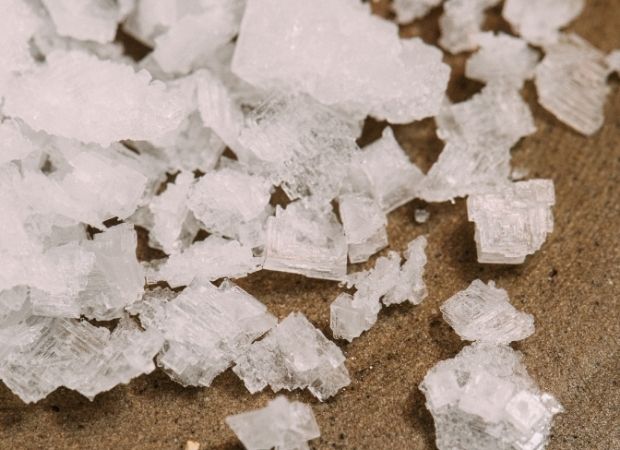Salt has been an essential part of life since ancient times. Today, most of us would never dream of cooking without it. We need to eat a certain amount of salt in order to survive, and as with many other things, this makes us naturally crave it. If we eat too much salt though, we can suffer from a myriad of health issues, such as heart problems, high blood pressure and strokes. The World Health Organization recommends that adults consume less than 5g of salt a day[1]. Technically a mineral and scientifically called sodium chloride, salt has served two very important purposes for thousands of years; to preserve food and to improve its flavour.
RECIPE: Salted dark chocolate caramel tart
There are two ways of preserving food with salt: dry salting and brining. Dry salting involves rubbing salt onto a food in order to draw out the moisture, for example in the making of hams like prosciutto. In cooking, we use this technique on ingredients such as aubergines, so they don’t go mushy when cooked, or on pork skin to help it crisp up. With brining, the food is placed in a water and salt solution. Brining is an exceptionally useful technique for adding flavour to meat and keeping it moist and juicy during cooking. Not only do the muscle fibres absorb the salty liquid, the salt also denatures the structure of the proteins in the meat and changes how it holds moisture. The Christmas turkey need never be dry again.
RECIPE: Salted caramel coma cake
Similarly, salt greatly improves the texture of many baked products, particularly bread. It retards the fermentation process, giving a more uniform result and strengthens the gluten, enabling the dough to expand without tearing.
A pinch of salt will also enhance the flavour of most sweets such as chocolate and caramel, or fruit desserts like lemon meringue tart. As well as balancing sweetness, salt also reduces bitterness. Heston Blumenthal[3] suggests comparing the flavour of plain tonic water to that of tonic water with a pinch of salt. The one with a pinch of salt will taste sweeter, as the bitterness has decreased. The same goes for coffee. Adding a pinch of salt will decrease any bitterness in your brew and give it a sweeter note.
Feels like we’ve been missing out, doesn’t it? If you want to get really creative, try combining white chocolate and salty caviar à la Heston Blumenthal. Or, if you’re not that brave, start with sprinkling a little bit of salt on fruit like watermelon or oranges. It’s not just margaritas that need to be served in a salt rimmed glass either, most cocktails will pop with a little salt. And don’t forget, if something tastes bitter, add a pinch of salt and let it work its magic.

